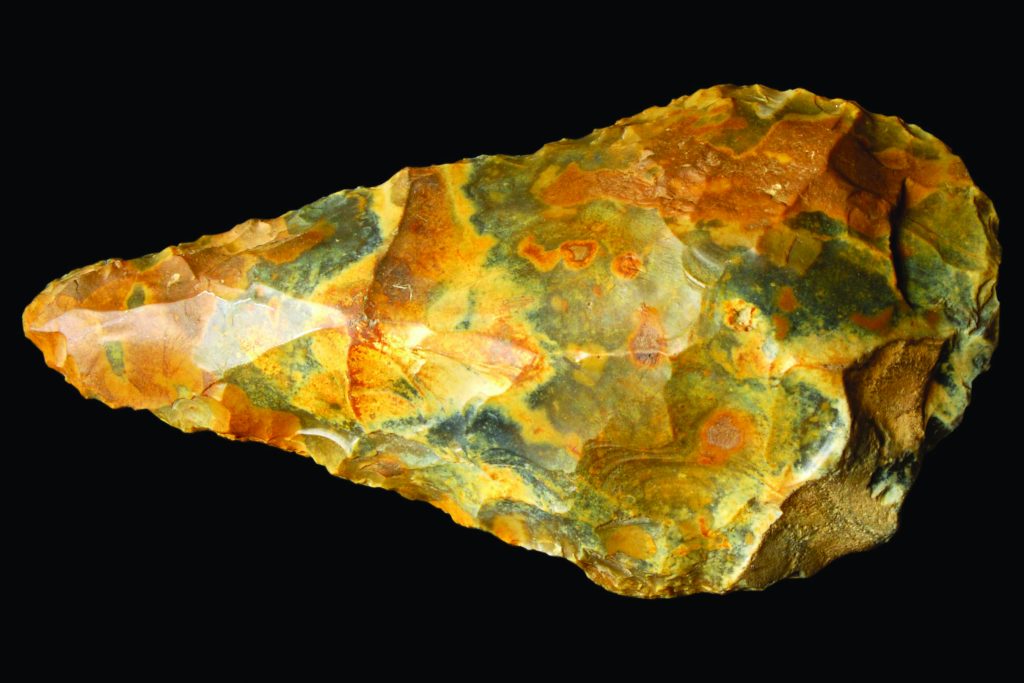a flickering line between two points in the landscape
by Chris Cundy
Walking into the Museum, going past reception and through into the prehistory gallery the very first object you see is a large flint handaxe. Its surface is speckled in rusty oranges and deep greens absorbed from the pigments of ancient river sediments. It was found in 1973 somewhere near the River Churn at South Cerney where it winds its way through a matrix of reservoirs and quarry levels. Highly valued by its original owner, this handaxe is thought to have been lying here for at least 42’000 years and there’s some speculation it could have been made and used even longer ago than that. This is the earliest object in the collection and evidence that Neanderthal hunter gatherers knew the river confluences of mainland Europe and followed them through the Rhine Valley and the Thames all the way into Gloucestershire. Some of the earliest people to bring flint tools here lived around 200’000 years ago. These people would have followed woolly Rhinoceros and herds of Mammoth on their way here.

The source of the River Churn emerges at a place called Seven Springs where it rises up from under the A436. A slither of yellow ochre spills out from just below the roadside while a constant stream of traffic thunders past above. It comes from deep reservoirs of yellow oolitic limestone, sediments of Jurassic rock packed with billions of fossilised sea urchins. Some people claim this is the true source of the River Thames suggesting it’s more than just a lazy tributary but a flickering line between two fixed points in the landscape. Is this the beginning of something or the end of a long migration? Rivers are elusive things but they follow gravitational pathways of least resistance. Throughout history rivers have been regarded as magical entities, fluid points between this place and the next, mirror images and reflections of past lives.
In this piece I wanted to listen back to the river, to see if I could hear it above all the traffic thundering past. I wanted to see if the river had a song and if I listened for long enough, I wondered if I might be able to hear a chorus of billions of ancient sea urchins singing from somewhere underneath the road.
I made the recordings on location, capturing the natural sounds around me meshed with the constant hum of the A436. I accompanied this with a small piece of unworked flint on a sound box played as simple percussion instruments. Back in the studio I added a small chorus of clay ocarinas, wind instruments, and layers of other sound sources.
a place in the river
by Adam Horovitz
The human story is cyclical
as water. It changes boundaries,
evaporates, comes back as rain,
falls in unexpected places,
rushes through everything
unstoppable as a river.
So much is changed by it. Made
myth beneath water-turned earth.
What is needed of myth is truth
and, out of truth, fact.
Of fact, we require a narrative
that leads us to a history
so that from that history we
can make stories, deep truths
that are reasonable enough
to explain a mythic world.
Work carefully with earth and water.
Let it run through your hands
as if they were sieves, delicate
instruments for divining particles
of things unforeseen. Each tiny
piece of the past, right down to dust,
has a meaning. A place in the river.
In the endless course of us.











